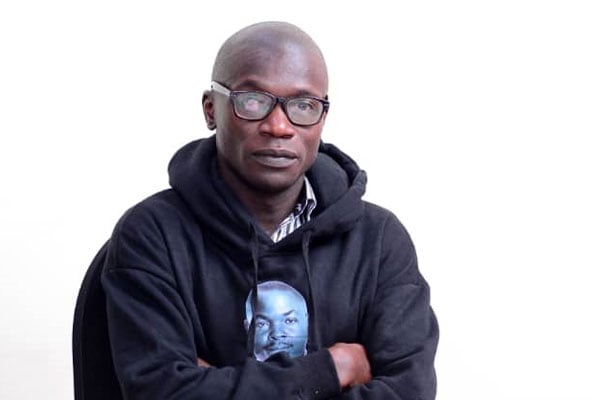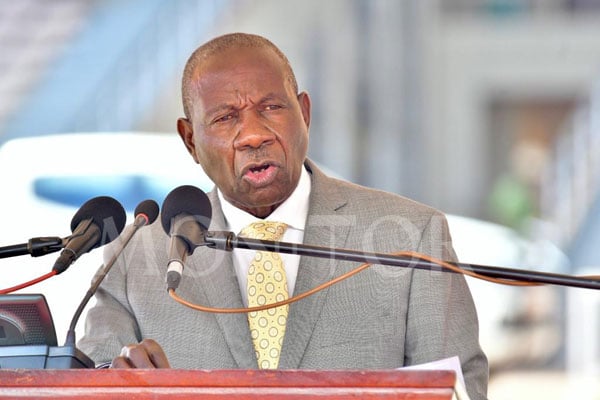Prime
Uganda’s deepening debt remains cause for concern

Minister of Finance Matia Kasaija arrives for the 2022/2023 National Budget reading at Kololo Independence Grounds on June 14, 2022. PHOTO / DAVID LUBOWA
What you need to know:
- The government insists that its debt stock is manageable. With observers worried about the prospect of debt distress, Derrick Kiyonga attempts to find out if Uganda can finally manage to curb its borrowing.
While reading the 2015/2016 budget, Finance minister Matia Kasaija boasted that 76.4 percent of the Shs23,972 billion was to be financed by Ugandans. This, Mr Kasaija reasoned back then, would help Uganda address its public debt stock; never mind that it was projected to reach $7.6 billion by 2016 compared to $7.2 billion in 2014.
“Although our public debt has increased faster compared to past trends, it is sustainable in relation to the size of the economy. Measuring public debt in relation to the size of the economy is a standard practice to know whether or not our debt is sustainable,” Mr Kasaija, who also represents the Buyanja constituency, said, adding, “Based on this measure, our debt to GDP ratio is estimated at 30.4 percent, which is far below the Public Debt Management Framework 2013 threshold and the East African Community Monetary Union convergence criteria requirement of 50 percent. Public debt sustainability also signifies that the government can continue servicing its debt without default.”
Earlier that year, President Museveni had used his State-of-the-Nation address to reveal that his government resisted the temptation of spending on consumptive areas at the expense of development and wealth creation.
Yet by 2019, there was a mounting body of evidence that Uganda’s borrowing could become unsustainable. Mr Kasaija, however, remained unmoved. He said then: “I would like to assure this country, and everyone, that our debt is sustainable in the medium to the long-term.”
The Finance minister said technocrats at his ministry were watchful.
“Every time a borrowing proposal is brought to me, there are certain things I must ask that officer, say ‘show me this, show me this!’ When the economy expands, businesses expand, and you people earn more money; so, because I tax you more, I get more money. Now I don’t need to borrow.”
Debt distress?
Mr Kasaija had a confession to make while recently issuing an apology to parliament’s Committee on Commissions, Statutory Authorities and State Enterprises (Cosase). A Shs10.6 billion supplementary budget advanced to the Uganda Land Commission (ULC) to pay land claimants in Buganda and Bunyoro sub-regions in the financial year 2020/2021 had stirred up trouble.
“There are thousands of documents to be read through and sign. My assumption is that we have technical staff who prepare these documents and I believe they carry out due diligence so when they bring these documents, I sign them,” Mr Kasaija said after preliminary investigations showed that legal procedures were flouted while processing the subvention.
The flip-flop on his technocrats at the Finance ministry has not been replicated when it comes to Uganda’s public debt. Observers, however, remained concerned. While reading the 2022/2023 budget on Tuesday, Mr Kasaija put Uganda’s public debt stock—as of December 2021—at Shs73.5 trillion. Of this, he added, external debt amounted to Shs45.72 trillion and domestic debt Shs27.8 trillion.
“When you exceed the threshold, you stand a danger of defaulting on your debts. The rate of borrowing has been increasing and the kind of funds we are allocating towards debt repayments is like 20 percent of the budget,” Mr Gilbert Musinguzi, the quality assurance manager at the Uganda Debt Network (UDN), noted, adding that the imbalance between borrowing and debt servicing worried him.
More worrying, Mr Musinguzi noted, is the fact that the debt stock is “a combination of commercial and non-commercial rate of borrowing.” The grace periods also offered little or no respite. Previously, Mr Musinguzi said, “[they] have been longer, but now—with the amounting debt—the grace periods will be shorter with more stringent rates.”
He added: “Even the interest rates are high, meaning we are likely to default, putting the country in a dangerous position, including key assets.”
Lightning strikes twice?
In his recent research paper titled Uganda’s Public Debt and Economic Growth, Mr Richard Sempala, an economist, says borrowing isn’t particularly new to Uganda. Under the Highly Indebted Poor Countries (HIPCs) initiative, Uganda was the first country to receive a debt relief worth Shs244 billion ($650 million) in the 1990s and later in 2006. This was under the Multilateral Debt Relief Initiative (MDRI).
Uganda, Mr Sempala further revealed, would later generously receive a 100 percent debt cancelation, which consequently reduced the stock of the country’s debt to Shs2.2 trillion ($1.6 billion).
Despite this—or in fact because of it—Uganda’s debt, Mr Sempala notes, has been mainly driven by overly ambitious targets as stipulated in both the Second National Development Plan (NDP II) and Vision 2040. Both are aimed at transforming Uganda from the peasantry to upper-middle-income category by 2032. A per capita income of $9,500 in 2040 is also one of the goals.
“Achieving these targets thus have propelled the government to invest in tremendous infrastructural projects such as dams, railways, and airports basically to unlock the productivity of physical and human capital,” said Mr Ssempala, who is the coordinator of finance and development at Oxfam—an international organisation that advocates for active citizen participation in tax and budget allocations.
Mr Ssempala consequently recommends that “heavy reliance on public debt..be discouraged especially in the short run.” Uganda’s current rate of borrowing, he warns, “is likely to have deteriorating economic growth figures partly because it adversely affects investment.”
Since dividends are to be yielded in the long run, Mr Ssempala suggests that “priority…be given to only such projects that have the potential to unlock Uganda’s productivity challenges.”
So could Uganda’s long-term infrastructure projects like dams that are financed by borrowing run out of hand? Mr Ssempala seems to think so.
“They have been from Chinese commercial loans from Exim Bank which have high-interest rates when compared to the loans from IMF and World Bank,” he said, adding, “So, the debt will continue to surge because there is no immediate profit from constructing dams or roads.”
In fact, while the politicians have been positive—even bullish—about Uganda being able to service and ultimately pay its debts; the technocrats don’t share a similar view.
“In regard to that, the nominal debt to GDP as at December 2020, stood at 47.2 percent, compared to 38 percent as of December 2019 and at 42 percent as of June 2020. So public debt is projected to rise to 51.9 percent of the GDP in the Financial Year 2021/2022, because the government will borrow to finance those key infrastructural projects, especially of transport, oil and gas sectors,” Moses Zziwa, the acting commissioner in charge of debt policy and issuance explained during a budget engagement last year.
For whom the bell tolls
The alarm bells have also come from Auditor General John Muwanga who used his latest report to make known his qualms.
“The rate of increase of debt is higher than the rate of increment in the GDP levels, which creates a risk of reaching unsustainable levels sooner than later,” his 2021 report said. “Such low levels of performance undermine the attainment of planned development targets and render commitment charges paid in respect of undisbursed funds nugatory.”
Though many are not positive about Uganda’s future creditworthiness, some economists insist that there is an inevitability around borrowing.
“Where are they going to get money to improve the infrastructure? How will they fund the oil and gas sector without borrowing?” asked Corti Paul Lakuma, a research fellow at the Economic Policy Research Centre (EPRC). “The problem isn’t getting loans; the problem is spending loans on things like salaries.”
In 2015, Mr Museveni indicated his intention to address this problem.
“We would have achieved more if we had spent less on wages and spent more on infrastructure,” he noted, adding, “Out of our total budget of Shs22 trillion, almost Shs3 trillion is spent on the government wage bill. From our own domestic revenue of Uganda, Shs11 trillion wages would account for 26 percent. By even saving a quarter of this you are able to build one and a half roads of the Kampala-Masaka type per annum where we spent Shs440 billion.”
Though Mr Museveni had ambitions of trimming the wage bill, districts, ministers, and presidential advisors have increased. This past week, Mr Kasaija announced that the government’s wage bill stands at Shs6,366.9 billion, which means the government needs to do more to get revenues.
“I am aware of attempts at frugal expenditure in government departments like reduction of foreign trips, workshops. However, there is a need for more radical steps like a ban on procurement of assets that have alternatives like cars (and the attendant expenditure on fuel), foreign treatment of government officials and this calls for improvement of local health services,” Dr David Mugambe Mpiima, a lecturer at the School of Women Studies at Makerere University, said. “Stop or heavily reduce borrowing, reduce big government mentality (no new administrative units) clamp down heavily on corruption and rethink salary increases.”
DON'T MISS: Is NUP on a self-preserving mission?
Mr Kasaija, who didn’t introduce new taxes in this financial year’s budget, was noncommittal about Uganda weaning itself off borrowing.
Shadow Finance minister Muhammad Muwanga Kivumbi believes Uganda will “continue borrowing because we have no fiscal discipline.”





